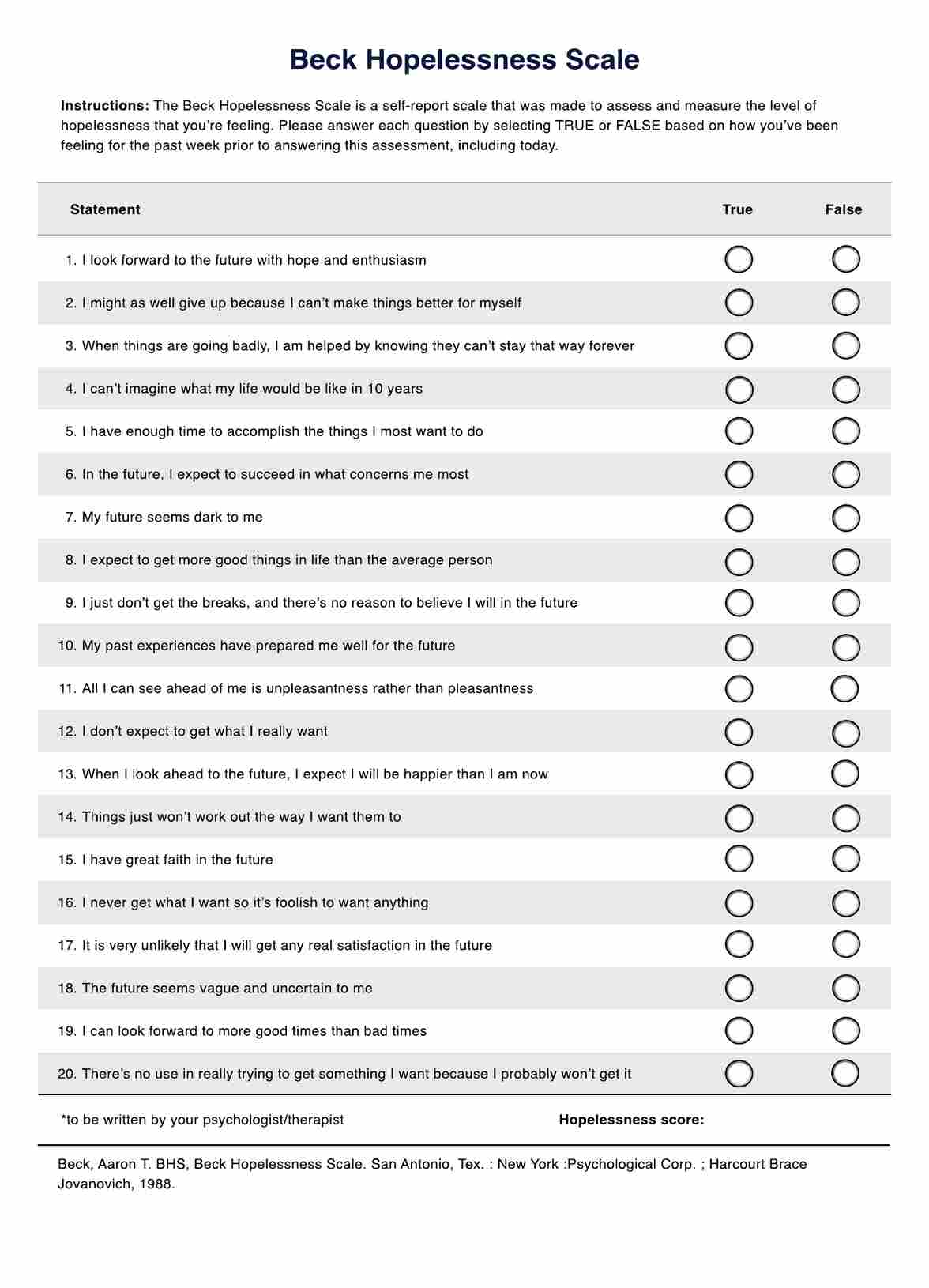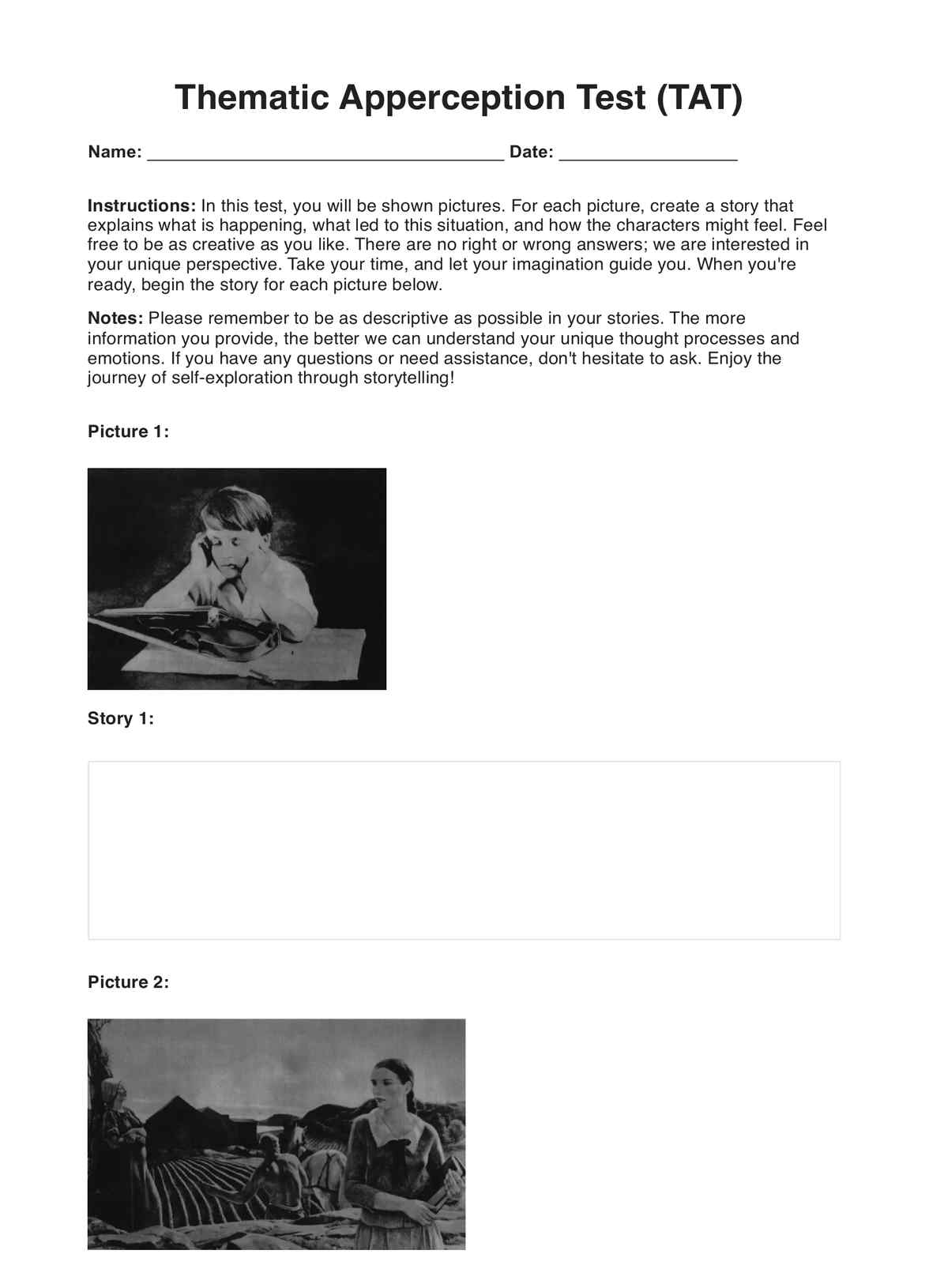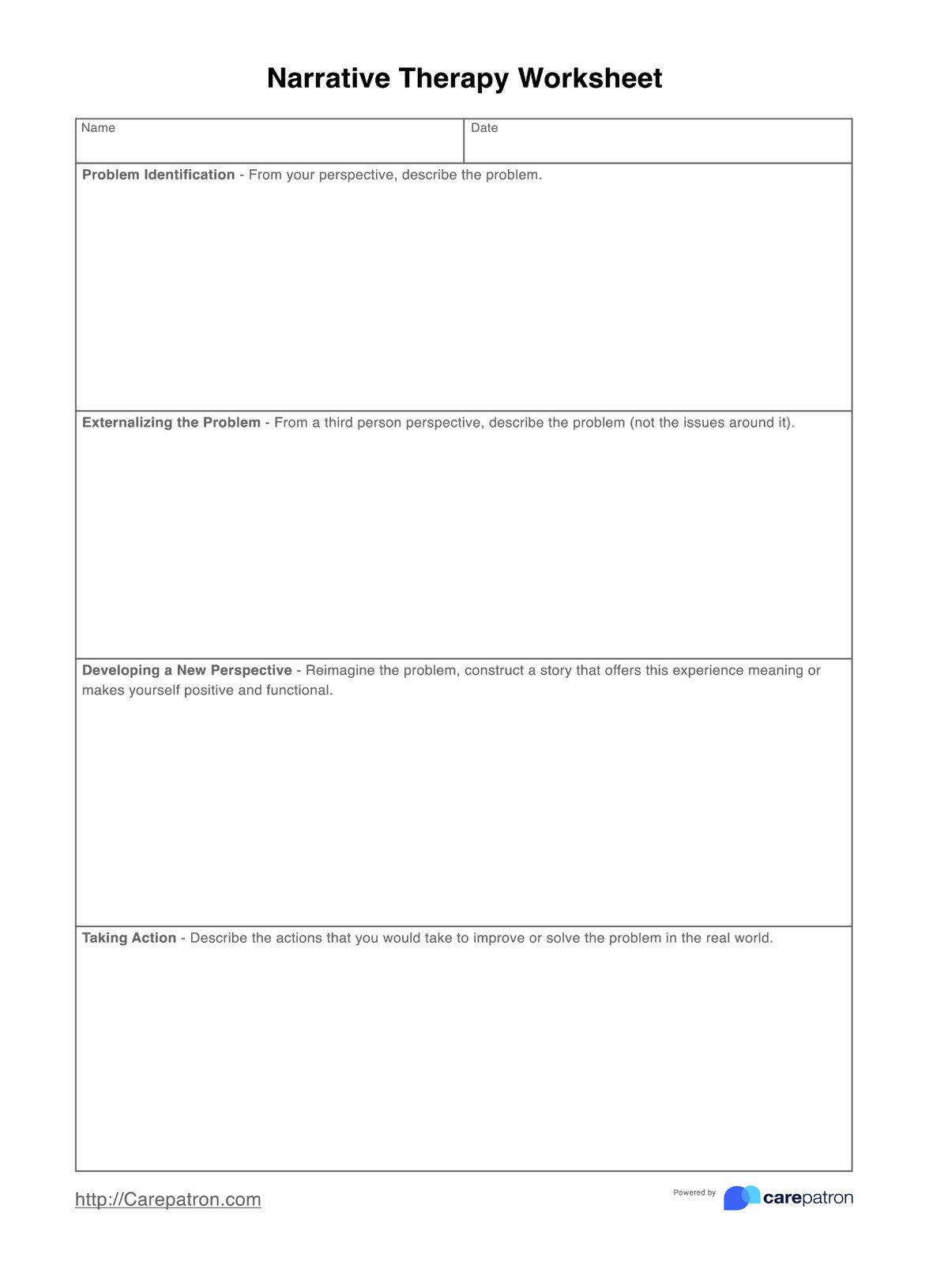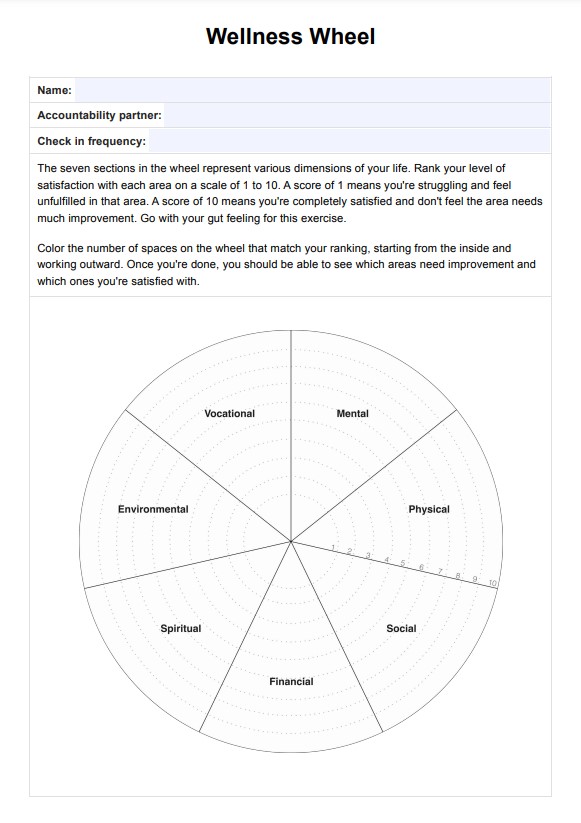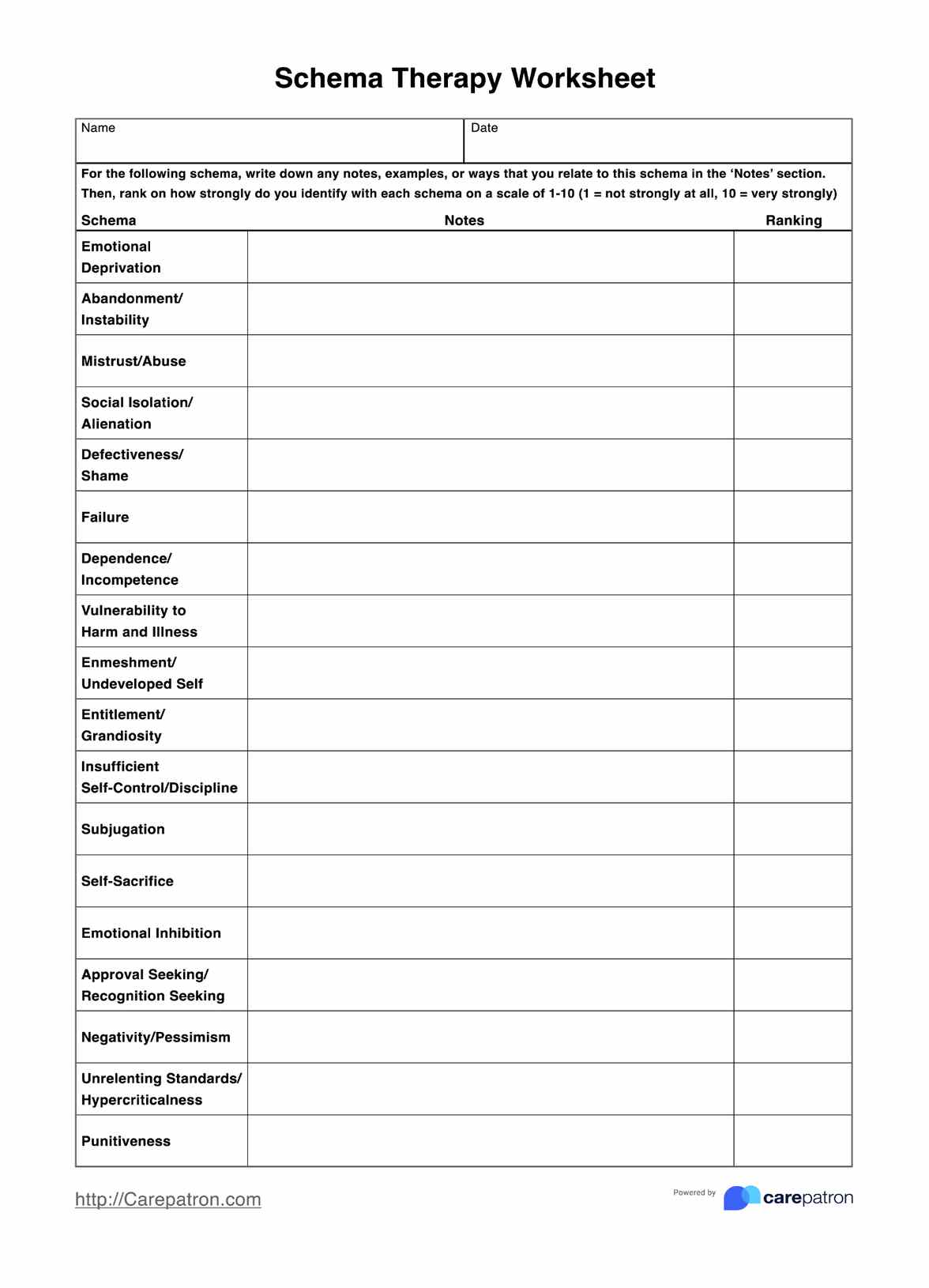Death Anxiety Test
Explore the Death Anxiety Test as a tool to gain an understanding of death anxiety among clients. Access a free PDF resource here.


What is death anxiety?
Death anxiety, also known as thanatophobia, is the intense fear or dread one might feel when thinking about death or the dying process. It's a natural, universal experience that can differ greatly in intensity among people. Death awareness could lead to people finding themselves thinking about the finality of death, the process of dying, the state of non-existence, separation from loved ones, or the mystery of what, if anything, comes after life.
This form of anxiety is significant because it can influence many aspects of our lives, including our behavior, decisions, and relationships. For some, it might trigger a deeper search for meaning in life or lead to existential questions. For others, it can cause significant distress, impacting their daily functioning and overall well-being.
Understanding and addressing death anxiety is crucial because it helps improve the quality of our lives, allowing for more present, joyful, and meaningful living. Knowing how to manage these feelings can significantly affect our mental and emotional health.
Death Anxiety Test Template
Death Anxiety Test Example
Symptoms of death anxiety
Death anxiety, an apprehension or deep unease about the concept of death and dying, is a complex psychological condition that can manifest in many ways. Though the experience of death anxiety may differ among people, several common emotional and somatic symptoms exist that help determine this condition. Beyond this, death anxiety aggravates symptoms that can manifest among individuals. These include emotional, cognitive, behavioral, and physical symptoms.
Emotional symptoms can greatly affect our mood, disposition, and day-to-day feelings. Associated emotional symptoms of death anxiety include:
- Persistent fear or dread: An ongoing, intense fear of dying or the reality of death that often dominates one's thoughts.
- Feelings of helplessness: A sensation of being unable to alter the inevitable fate of death, heightening anxiety.
- Increased sadness or depression: Deep sadness or depressive feelings that surface when pondering about death, impacting one's emotional state.
Cognitive symptoms revolve around the impact of death anxiety on thought processes and mental functions. Recognizable cognitive symptoms may consist of the following:
- Obsessive thoughts: Frequent, intrusive thoughts about death, dying, or the afterlife that can be distressing and hard to manage.
- Difficulty concentrating: Trouble focusing on daily tasks or long-term goals due to preoccupation with thoughts of death.
- Denial: Resistance towards accepting the reality of mortality, often leading to a conscious avoidance of any considered death-related topics.
Behavioral symptoms of death anxiety can result in observable changes in one's actions and routines. These changes may include:
- Avoidance: Avoiding situations, conversations, or places that might trigger thoughts of death or dying.
- Seeking reassurance: Frequently seeking validation from others about health status or safety to counter fears about death.
- Changes in routine: Altering behaviors, such as abruptly taking extreme safety measures or avoiding familiar activities they once enjoyed, in an attempt to avoid thoughts of death.
Physical symptoms, then often present as tangible bodily reactions or states of discomfort that occur as a result of severe death anxiety. They include:
- Sleep disturbances: Difficulties with falling asleep, staying asleep, or exposure to nightmares due to death-related worries.
- Physical tension: Indications such as muscle tightness, headaches, or stomach discomfort, often stemming from ongoing anxiety.
- Rapid heartbeat or shortness of breath: Physical manifestations of panic or heightened fear when contemplating the idea of death.
Death anxiety causes
Being familiar with the potential causes of death anxiety is essential to comprehending this complex psychological condition. While each individual's experience is unique, certain scenarios often trigger this type of anxiety. This includes the following:
- Personal experience with death: People who have had a close encounter with death, either their own or a loved one's, might find such experiences triggering an onset of anxiety related to death. Witnessing or experiencing a severe illness, a near-death incident or the death of someone close can significantly contribute to fear about mortality.
- Nearing significant life changes: Major changes in life, such as reaching elderly age or significant birthdays, can trigger thoughts about mortality and possibly spark age and death anxiety. The realization of passing time and the proximity of the end of life can form an emotional challenge for many people.
- Health issues and aging: Struggling with health complications or the aging process can result in heightened death anxiety. The association of health deterioration and older age with mortality can provoke intense concern and a sense of vulnerability toward death.
- Trauma or post-traumatic stress disorder (PTSD): People dealing with traumatic or stressful events might frequently have distressing experiences, including those related to death, which can subsequently contribute to anxiety about dying.
How do healthcare professionals diagnose death anxiety?
For healthcare professionals to accurately diagnose death anxiety, a thorough and considered approach is required. Below, we outline the process healthcare providers typically follow to identify and assess death anxiety.
Clinical evaluation
A healthcare professional will often start with a detailed discussion, diving into a client's feelings, thoughts, and experiences related to death and dying. This initial conversation allows the clinician to understand the depth and nature of the anxiety. The provider will also review the client's personal background, including any history of mental health concerns, and current physical health.
A direct conversation about how they have been feeling and the specific worries they may have about death is a key part of this process.
Death anxiety scales and questionnaires
To further understand the extent of death anxiety, a clinician may use a reliable and valid measure such as validated psychological tools and questionnaires. These are designed to measure the level of anxiety an individual may have concerning death.
A death anxiety inventory like the Death Anxiety Scale (DAS) and Boyar's Fear of Death Scale may be used in the process of examining death anxiety. Questionnaires might also explore how death anxiety reflects on our daily behaviors and routines.
Symptom assessment
Recognizing that death anxiety can manifest in various ways, healthcare professionals will evaluate both the physical and emotional symptoms you might be experiencing. Sometimes, the body responds to emotional distress with physical symptoms. Practitioners dive into how these fears affect clients' emotional well-being and day-to-day mood. The insights gained here can then be integrated with the results of the previous death anxiety instruments.
Rule out other conditions
Healthcare providers also aim to differentiate death anxiety from other conditions or disorders that may present with similar symptoms. Since symptoms can overlap with other anxiety or mood disorders, a thorough assessment ensures an accurate diagnosis. Sometimes, physical health issues can mirror anxiety symptoms. This is why clinicians may perform or request physical examinations and tests to rule these out.
Creating a supportive environment
Healthcare professionals strive to create a supportive and non-judgmental environment throughout the diagnostic process. It is a priority to ensure that the client feels safe to express their concerns without fear of judgment. Explaining the process and the next steps can help ease any additional anxiety about the assessment.
What is a Death Anxiety Test?
A death anxiety questionnaire is an analytical tool used by psychology professionals to measure death anxiety. This examines the prevalence and intensity of a person's anxiety relating to the concept of death or dying. A Death Anxiety Test is a carefully constructed questionnaire that focuses on an individual's feelings, thoughts, and fears linked to the concept of mortality. By evaluating responses to specific questions, healthcare professionals can gauge the extent and intensity of a person's anxieties relating to death.
Existing death anxiety measures are typically formulated as a self-report questionnaire featuring a series of statements to which respondents assign ratings based on their personal feelings and experiences. Commonly used death anxiety tests include the Templer Death Anxiety Scale and the Death Anxiety Scale (DAS).
How do you score this test?
The questionnaire consists of 15 items that address relatively distinct death anxiety aspects. Clients will respond to each item based on how they feel, using a simple 0 to 2 scale where 0 means "not at all", 1 means "somewhat", and 2 signifies "very much".
These questions talk about fears about dying, the pain associated with it, leaving loved ones behind, and concerns about what happens after death, among others. After answering all questions, add up the scores. This total score will reflect the level of death anxiety—the higher your score, the more pronounced the anxiety is.
After completing the Death Anxiety Test, understanding and interpreting the results is crucial in managing any concerns or anxieties you have about death. The total score on the Death Anxiety Test is a reflection of your current feelings towards death and dying. The scoring is straightforward:
- Score range: The test scores can range from 0 to 30.
- National average: The average score is 8.5, based on the referenced study.
If a client scores lower than the average, they may have lower levels of anxiety towards death. Conversely, scores significantly above the average denote increased death anxiety.
Determining how to proceed after understanding your client's score is key to formulating an effective care plan. Here are some recommended steps:
- Discuss the results: Make a point to discuss test results with your client, ensuring they understand what their score means and how it relates to their feelings about death.
- Assess their anxiety: If your client's score signifies high levels of death anxiety, a comprehensive assessment of their anxiety's nature, triggers, and manifestations is advisable. This will help tailor a more specific care plan.
- Involve mental health professionals: If necessary, refer your client to a mental health professional who specializes in anxiety disorders. They can help manage and alleviate severe anxieties.
- Establish coping strategies: Based on your client's state, suggest coping mechanisms, such as mindfulness activities, breathing exercises, or journaling. These interventions can help manage their feelings of anxiety.
- Provide educational resources: Offer your clients materials that discuss the realities of death and dying. This could help reduce fears stemming from uncertainties and misunderstandings.
- Design a long-term plan: Plan for continuous monitoring and follow-up appointments to reassess your client’s feelings and adjust their care plan as necessary.
How does our Death Anxiety Test template work?
As a practitioner, the Death Anxiety Test Template is a helpful tool in measuring death anxiety. We have adopted the Death Anxiety Questionnaire by Conte and colleagues (1989). It is a tool used to measure an individual's level of anxiety or fear related to death. This questionnaire consists of a series of questions designed to assess the intensity of death anxiety experienced by the respondent. Here's a step-by-step guide on how to use this template in your practice:
Step 1: Explain the test
Clarify the purpose and process of the test to your client. The test is composed of a variety of questions that explore different aspects of death anxiety. Understanding that the test aids in figuring out their feelings regarding death can encourage participation.
Step 2: Guide your client through the test
Guide them through the test instructions. As your client is answering the questions, encourage them to be as honest as possible. It's important for the accuracy of the assessment that they feel secure with their confidentiality.
Step 3: Compute and interpret the score
Once your client completes the test, tally up the numbers chosen for each question. The total of these numbers is their score on the Death Anxiety Test. Scores can range from 0 to 30. A higher score could mean a higher death anxiety.
Step 4: Discuss the results with your client
Discuss the results with your client, placing their score in the broader context of the general population. Foster an open conversation about their feelings and fears, providing support through a non-judgmental and empathic approach.
Step 5: Create a care plan
Use the results to formulate a care plan or adjust an existing one. If the client's anxiety is severe, you may need to involve a mental health professional specializing in anxiety disorders.
Benefits of this Death Anxiety Test
The Death Anxiety Test provides a unique insight into one's psychological landscape regarding thoughts and feelings about death. This tool, with its straightforward and accessible approach, offers several benefits not only to clients taking the test but also to practitioners who are guiding them.
Enhances self-awareness
One of the primary benefits of this test is the enhancement of self-awareness. It encourages individuals to reflect on their feelings toward death, something that is often ignored or suppressed in daily life. This reflection can lead to a deeper understanding of oneself, potentially revealing underlying anxieties or beliefs that influence behavior and decision-making.
Aids in the development of coping mechanisms
Understanding one's level of death anxiety is crucial in developing effective coping mechanisms. For individuals with high anxiety levels, recognizing the source of this discomfort is the first step toward addressing it. The test can guide practitioners in tailoring interventions, therapies, or strategies that specifically address these feelings.
Facilitates tailored healthcare plans
For healthcare practitioners, the insights gained from the Death Anxiety Test are invaluable in arriving at clinical and counseling diagnoses, which then leads to personalized care plans. It allows for a nuanced understanding of the client's emotional state, enabling the practitioner to recommend specific therapeutic approaches, mental health resources, or educational materials that address the individual's needs.
Why use Carepatron as your mental health and therapy software?
Selecting the right therapy software solution is crucial for mental health professionals to practice efficiently while providing the best care for clients. Carepatron is designed to streamline every aspect of your practice management. Carepatron provides a range of customizable clinical templates, including the Death Anxiety Test. These resources can be tailored to fit your unique professional approach, enabling you to conduct assessments and document clinical sessions efficiently.
From scheduling appointments to tracking client progress, we provide a one-stop solution that ensures your administrative tasks are handled with ease. This approach lets you focus more on client care and less on paperwork.

Reference
Conte, H. R., Weiner, M. B., & Plutchik, R. (1982). Measuring death anxiety: Conceptual, psychometric, and factor-analytic aspects. Journal of Personality and Social Psychology, 43(4), 775–785. https://doi.org/10.1037/0022-3514.43.4.775
Commonly asked questions
Yes, it is fairly common. Most people experience some form of death anxiety at various points in their lives. However, the degree to which this anxiety is felt varies widely among individuals and across different cultures and religions.
Death anxiety can be triggered by numerous factors, such as personal encounters with death, traumatic events, the process of aging, or even philosophical introspection. An individual's cultural, social, and religious background also plays a significant role in shaping their views about death and dying.
While it might initially seem daunting, discussing death can often actually help manage death anxiety. Rather than amplifying the fear, these conversations can lead to a better understanding and acceptance of its inevitability, and decrease the fear associated with the unknown.


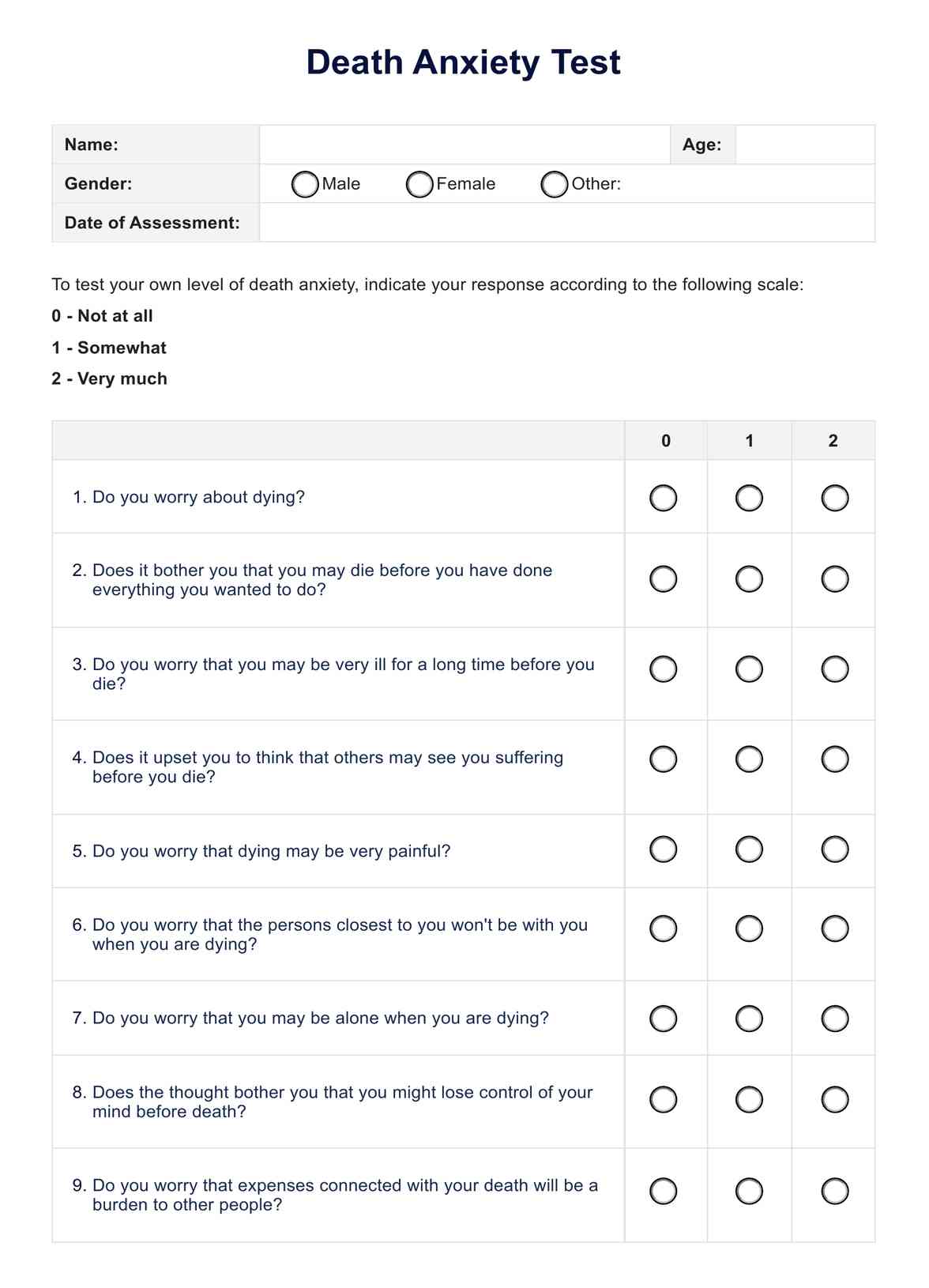
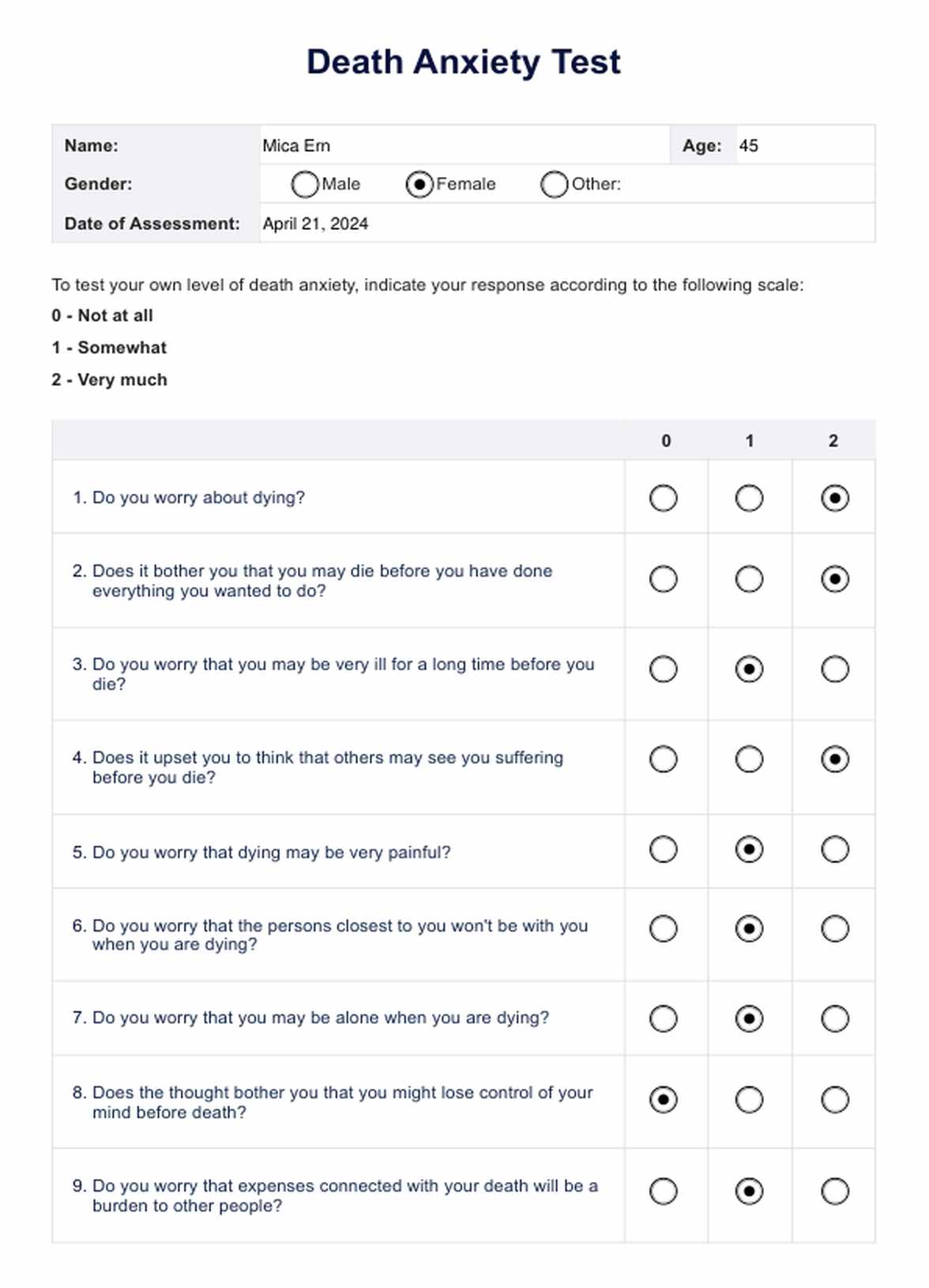

















-template.jpg)



















































































